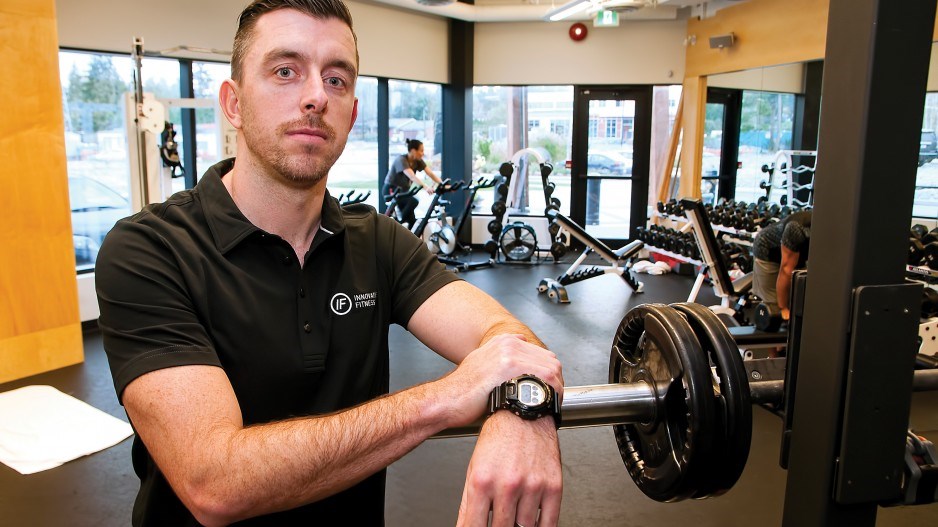If you are seeking a buff mind and body that is even a bit on the sexy side in your senior years, the good news is you don’t have to blow the budget with fancy gym equipment, expensive spa treatments or exotic potions.
In fact, a leading fitness instructor cautions that unlicensed instructors populate B.C.’s fitness industry, placing a greater emphasis on do-it-yourself exercise.
“What we find is there’s a lot of people out there who are not accredited or they don’t have any type of certifications or education,” says Curtis Christopherson, principal of Innovative Fitness White Rock, who holds a bachelor of kinesiology from Simon Fraser University (SFU) and has been working in the industry for 18 years. “They might look the part and think they know what they’re doing, but they don’t.”
Unlicensed fitness instructors are holding boot camps in parks, hosting stationary cycle groups or running CrossFit gyms, but the industry has no government body to oversee accreditation or set out and enforce regulations, Christopherson says.
But you may not even need a gym or an instructor to keep in shape.
You just need to follow the sage advice handed down through the ages.
Stay mobile, eat lots of fruits and vegetables, don’t smoke, drink alcohol in moderation if at all, get regular checkups with your doctor and do what he or she tells you, experts say.
Staying mobile is the No. 1 thing you can do to maintain good health, says Dan Levitt, executive director of Tabor Village, a seniors’ home in Abbotsford, and an adjunct professor in gerontology at SFU.
Walking works just fine as an exercise. He recommends half an hour a day five, days a week at a minimum. If you can tuck in some running or extra exercise classes, so much the better.
Then there is diet. The good news from Levitt is there is no need to go on an austere no-carb, no-dairy, no-meat regime. Just eat lots of fruits and vegetables and yes, tuck into that odd bit of chocolate or ice cream.
None of us likes that regular trip to the doctor’s office but it’s a must. Get that heart, blood, blood pressure and colon checked.
Teresa Liu-Ambrose, director of the aging, mobility and cognitive neuroscience lab at the University of British Columbia and an associate professor, also emphasizes the importance of seniors staying physically active.
“The evidence would show that it’s never too late to start,” she says. “Even if you start later in life, you would still reap the benefits and it really isn’t a high dose to start.”
While walking is excellent exercise, she says some strength training can also be beneficial because we tend to lose muscle mass as we age.
Something as simple as moving from a sitting to a standing position five to 10 times in one bout can build strength.
Strength training where you work all the major muscles in both your upper and lower body twice a week is the ideal, with weights gradually added.
Her advice is to pick some physical activity you enjoy and be consistent with it.
As for improving the overall fitness industry, Christopherson recommends having fitness instructors added to extended health-care insurance programs, which should result in government oversight to ensure best practices. He says the issue is especially important for seniors, because an unlicensed and unregulated industry could lead to more injuries.
Holly-Anne Burrows, communications and member relations manager for the British Columbia Recreation and Parks Association, acknowledges the fitness industry is unregulated, noting there are about 5,000 “registered fitness leaders” across a wide range of job titles including group fitness, yoga fitness, weight training, personal training and older-adult training.
“This certainly leaves clients vulnerable to misleading claims, unsafe practices, and abuses of trust,” Burrows says. “However, it is not the Wild West, since there is a national practice standard registration in place that requires fitness leaders’ competency to be examined and maintained through continued education credits.”




